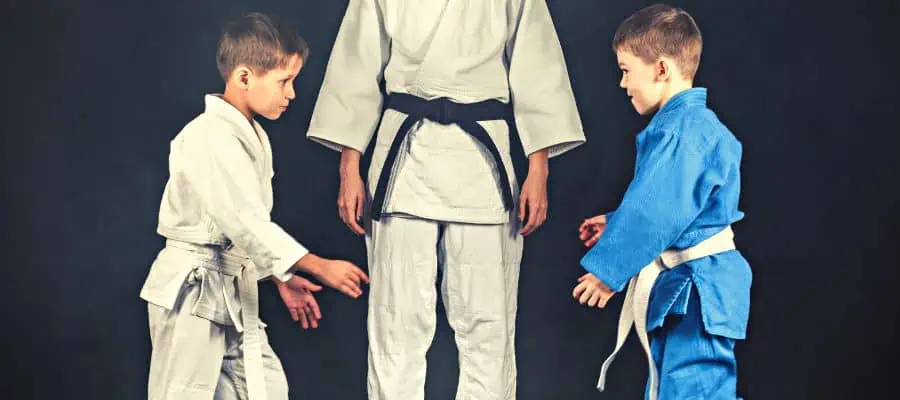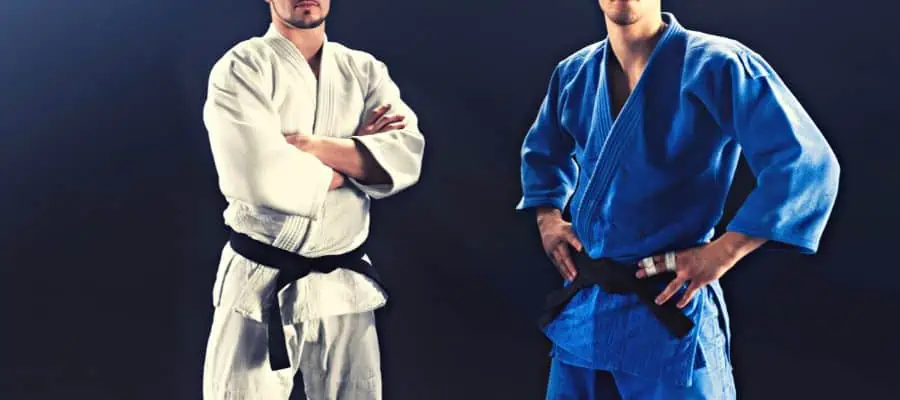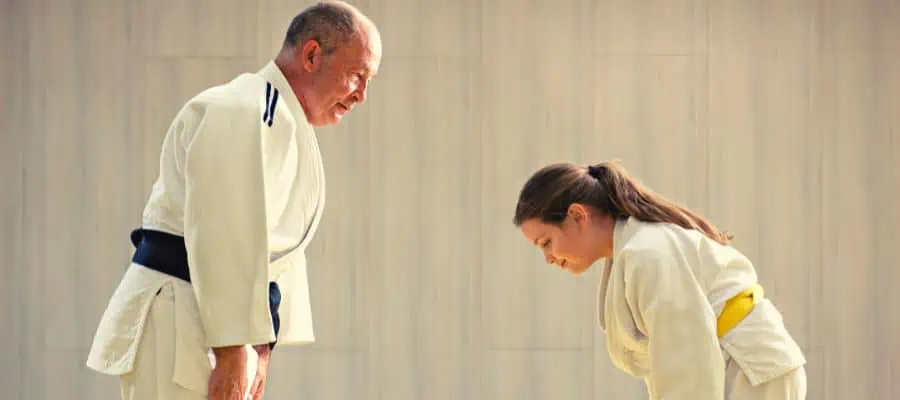Judo is a martial sport practiced for 140 years and translated means “gentle art.” It has its roots in Japan. The sport was invented by the famous Jigoro Kano Shinan, who combined the best elements of Japanese jiu-jitsu. Adapting the deadly art so that it can be taught in schools and colleges as a sport. This type of wrestling sport does not involve hitting an opponent but includes submissions.
So, is Judo worth learning? In general, whether you are 40 or ten years old, judo is a fun and effective combat sport. Suitable for women and men. From a health point of view, there are more benefits than disadvantages. It has a positive impact on your general physical fitness and mental strength. You will not go wrong with dedicating yourself to this sport.
This ancient craft is based on discipline and respect and spread worldwide. It is practiced in a traditional uniform called Judogi, used in training and practice. The fact that it has been an Olympic-recognized sport since 1964 speaks for itself.
Practicing Judo: Time, Money, Health and Popularity

Anyone who practices judo will tell you that the sport is a life decision that takes its toll on time, effort, and money. But it is often a decision that gives much more in return. However, deciding if it’s worth it is up to you.
Money Needed For Judo
Costs can turn you away from something you want and are often the main reason behind your decisions. Before committing to something, the question is always how much it costs. Martial arts are paid for with effort, sweat, and time, but in this case, we mean the monetary price.
Initial costs include money for the membership fee and adequate training equipment. With good financial organization, you don’t have to be wealthy to start your Judo adventure.
The Price Of Judogi
The first and basic thing you need for training is your Judogi. It is a one-time cost. Prices range from $25 to $200. They depend on the brand and quality; the better it is, the longer it will last. Having two or three to wear for hygienic reasons would be preferable.
Membership Fee
Factors that affect the price of the membership fee are the location where you train and the number of times you train. You should choose a gym with a good reputation for better training. Prices generally range from $50 to $200. Training lessons are approximately three times a week. If it is a financial and time burden for you, you can always find someone reliable for private lessons and make an agreement.
Other Expenses
Hobbyists will always do better with finances because Judogi, car fuel, and membership fees are mostly all expenses. On the other hand, if you have decided to go to the competition, you must know that the venture is self-funded, which will additionally pump up your accounts, but still not too much.
You have an advance payment for the tournament of about $30. Other expenses may include travel expenses for the competition, your supplementation, and food.
The Time And Effort Required To Progress In Judo
Judo is designed to be teachable and easy to understand. Like any skill, if you want to improve, you must regularly train. It is a demanding physical sport requiring speed, strength, and flexibility.
The creator of judo, Kano, is also the creator of the belt ranking system adopted by other martial arts. Accordingly, your progress will be marked by the given belt. Your time and effort depending on your goals and vice versa.
Training As A Hobbyist And Recreational Player In Judo
The recipe for progress is simple. It takes time to learn the techniques and much more time to master them. If you train just to get moving and stay in shape, one to two workouts a week will be fine. You must know that at that pace, your progress will be slow. While training three times a week for two hours with a good instructor will accelerate your progress.
Pay special attention to fundamentals, balance, and basic movements. Learn to take advantage of your opponent’s momentum to use as less strength as possible. Another important thing for beginners is to learn Ukemi (Fall breaking), which will help them avoid unnecessary injuries.
Training As A Competitor In Judo
Participating in competitions can be great for evaluating yourself from other angles and discovering your weaknesses and strengths. But If you want to compete, you must increase your training and do some extra hours in the gym and outside of it.
Four times a week with mild Strength and Conditioning training should be fine. To be successful in competitions, you need to live like a competitor outside of the dojo, which means regulating your diet, time for rest, and additional stretching. Any extra effort in training will come in handy.
Health Benefits Of Judo
Judo is a physical activity that builds health, strengthens muscles, and improves cardio. It is perfectly adaptable for children but applicable to adults as well. Judo is good for building physical strength and serves as a full-body workout that hits large muscle groups.
In addition to physical strength, it also improves muscle endurance. As a wrestling sport, it also plays an important role in your mental health and character building. It will make you develop good mental habits and qualities.
Frequent and high-quality training will give you greater self-confidence, which makes you feel better and stronger mentally. It is also based on learning discipline and respect as its core values. There are very few downsides, and for some people, almost none.
Popularity Of Judo
Judo is a very famous world sport. Statistics say that over 50 million people practice Judo in 200 countries. Although these seem large numbers, they are very small compared to other martial arts. That’s where his viewership falls.
The reason for this is the small number of superstars in this sport; they are present and active but not world-famous. Another reason is the deficit of investment, advertising, and platforms for this sport. Judo is no less interesting than other martial arts; anyone following it can confirm that.
Its viewership jumps every four years when the Olympic Games are on, which is the peak of its popularity. It gets its viewership because of its multinational competitors and is one of the most watched sports in the Olympics. It is sad and disappointing that such an ancient and exciting sport has very few eyes following it.
Of course, this depends on the country. Judo is huge in Korea, Japan, Russia, and France. Japan is trying to promote its sport by sending its instructors to areas where it is less known.
Is Judo Good For Self-Defense?

Like any combat sport, the initial goal is to avoid unpleasant situations. But Judo is a great thing for self-defense and a good solution if you ever run into the inevitable problems on the street.
The charm of Judo is that you use momentum to throw the aggressor off balance and ground him even if you are physically smaller. Redirect the energy, and gravity will do the work for you. Throwing the opponent to the ground will stimulate him to think twice before attacking anyone next time.
Its effectiveness also comes from submissions taught in class. Judokas also use grips on clothes, so you can immediately and defensively act when someone puts their hands on you and quickly end the conflict. In the case of the more experienced attacker, you will need to quickly close the distance, which is another benefit of training in judo technique.
Which Age Is Best For Judo?

This sport has benefits for both children and adults. A great thing for children aged four and up is to send them to Judo training. It is a convenient time for them to receive and process information. In the following years, their motor skills and cognitive abilities develop.
Accordingly, their training should focus on fundamentals and fun. Judo teaches the younglings about discipline, respect, and physical abilities like balance, agility, and body coordination.
The question often heard is whether you are too old to start Judo. Age does not determine your condition. The answer is no; you are never too old for Judo. It is a super move for your self-development. In adults, it can improve their general physical health condition.
The sport relieves stiffness and helps mobility. It will make you functional and mobile, and when training becomes a habit, you will feel much younger than you are.
Is Judo Hard On The Body?

Regardless of the health benefits of Judo, it is very rough on your body. It is one of the most brutal martial arts you can put your body through. You need to know you don’t have to be a competitor to get hurt.
Sprains and strains can occur from the constant throwing, choking, and gripping of your joints. Neck and head injuries are very common during awkward landings. Also, finger injuries because fingers are often used due to cloth griping on each other.
After testing all ages and performance levels, statistics from 2005-2020 say that the injury rate is between 12-30%. Fortunately, serious injuries are not common. Injuries are inevitable and an integral part of every martial sport! Of course, there is always prevention of these things.
A quality warm-up will help prepare your body for martial arts activities. Stretching after training can also reduce pain but not eliminate it completely. Perfecting your fall techniques will also help. Remember to work on your mobility, which will also reduce your risk of injury.
Is Judo Difficult To Learn?

Although Judo is adapted to be easy to learn, it is quite difficult to master, especially if you are a beginner at the gym. Judo is a sport for all ages and knows no gender discrimination, but let’s be honest, it’s not for everyone.
Those who like a little challenge in learning will find learning interesting. It contains many small and complex details for each movement and technique, which will be stressful and seemingly complicated for a beginner. It will take you many hours to repeat some details for your body to memorize the movements.
One of the characteristics is slow progress which can be either challenging to your mental strength progress or discouraging. Repeating the same techniques for hours is sometimes exhausting, and being thrown repeatedly is frustrating. Still, it is the only way to sharpen the technique and understand its meaning.
What Is The Difference Between Judo And Jiu-Jitsu?

Both Judo and Brazilian Jiu-Jitsu have their roots deep in Japanese Jiu-Jitsu. Belt Ranking in BJJ was originally taken from Judo with minor changes. These two sports have many similarities; both have submission attempts and are practiced in similar uniforms.
But they differ in many other ways. Their differences are in their purpose, their specializations, the method of belt ranking, different fighting styles, different rules, and even different techniques.
Generally, Jiu-jitsu practitioners focus more on submission attempts and opponent control on the ground. Judokas are masters of bringing their opponent to the ground, throwing and sweeping them from close and standing physical contact.
Grappling in Brazilian Jiu-Jitsu can be much more dynamic, but Judo can be more rough, explosive, and dangerous. Although both have advantages and disadvantages, they give excellent results and improvements if you train and guarantee safety and efficiency for self-defense purposes.
Conclusion
Let us conclude that this age-old skill, injuries aside, has more to offer than to take away. Launching people into the air and onto the floor is one of the most beautiful feelings, especially when you learn to do it with a little effort and correct redirection of energy. It is inexpensive, and you don’t have to be rich to practice judo.
It is poetry in motion. An art that is worth every training session and drop of sweat. It will develop your discipline, respect, and work ethic, which you can apply to other aspects of life. It does your body a favor by making you strong and mobile and keeping you young.
It greatly influences your mental strength; it will develop patience, fighting spirit, and other psychological qualities. It is good for self-defense, and your kids can join the practice too. Have patience; returning from each training session will leave you feeling rewarded. You shouldn’t hesitate to step on your dojo’s mat for the first time.
Recent Posts
What is Manachai's Fighting Style? Unveiling Muay Thai Mastery
Manachai, a celebrated figure in the Muay Thai world, has captivated audiences with his exemplary martial prowess. Hailing from the heartlands of Thailand, his name is synonymous with the art of...
What Was Chamuekpet Hapalang's Fighting Style? Unveiling Techniques
Chamuekpet Hapalang was a renowned figure in the world of Muay Thai (record 200-48-2), embodying a fusion of Muay Bouk and Muay Khao styles. Originating from Thailand, the art of Muay Thai is known...
